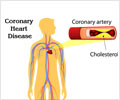According to researchers, doctors should begin evaluating people's risk factors for heart disease, including blood pressure and cholesterol levels,
According to researchers, doctors should begin evaluating people's risk factors for heart disease, including blood pressure and cholesterol levels, beginning at age 20, the American Heart Association recommended Monday in new guidelines for the prevention of heart attack and stroke. Thomas Pearson, chairman of the panel, observed that heart disease actually begins in teenage years, and there certainly is an opportunity to make large changes in behavior early on. He said that twenty percent of people find out they have heart disease by dropping dead" so the goal of the guidelines is to prevent a first heart attack or stroke,
"This doesn't imply that one would be placed on drugs" in their 20s, he said. However, medication may be appropriate for people at that age with high blood pressure or high cholesterol, he said. The recommendations advise doctors to measure their patients' blood pressure, body mass index, waist circumference and pulse at least every two years beginning at age 20. Cholesterol levels and blood-sugar levels should be measured every five years.It had been recommended previously that blood pressure and cholesterol monitoring begin at age 20, but "it's very clear that there's an underassessment and undertreatment of risk factors in general," Pearson said. For those over 40, doctors should look at all the risk factors and assess their potential for developing heart disease within 10 years. This can be used to determine who would be a candidate for aspirin or cholesterol-lowering drugs, Pearson said.
The guidelines recommend low-dose aspirin for those with an increased risk for heart disease. Aspirin can cause bleeding in the intestines and stomach and increase the risk for a stroke, but if a person's chance of developing heart disease within 10 years exceeds 10 percent, then the benefit of preventing heart disease outweighs the risks of side effects.
"The continuing message is that adoption of healthy life habits remains the cornerstone of primary prevention, including the avoidance of tobacco (including secondhand smoke), healthy dietary patterns, weight control, and regular, appropriate exercise," the panel writes in the July 16 issue of the journal Circulation.
"Risk begins at an earlier age than age 40 or 50 ... and this is an attempt to move the focus back to early adulthood when you become a responsible person for your own health," Stein said. The guidelines also try to point out that "it's not just one thing, it's a combination of things" that culminate to cause heart disease.
Other recommendations to prevent heart attack and stroke include maintaining a healthy overall diet and healthy weight and getting at least 30 minutes of moderate-intensity exercise on most, if not all, days.











